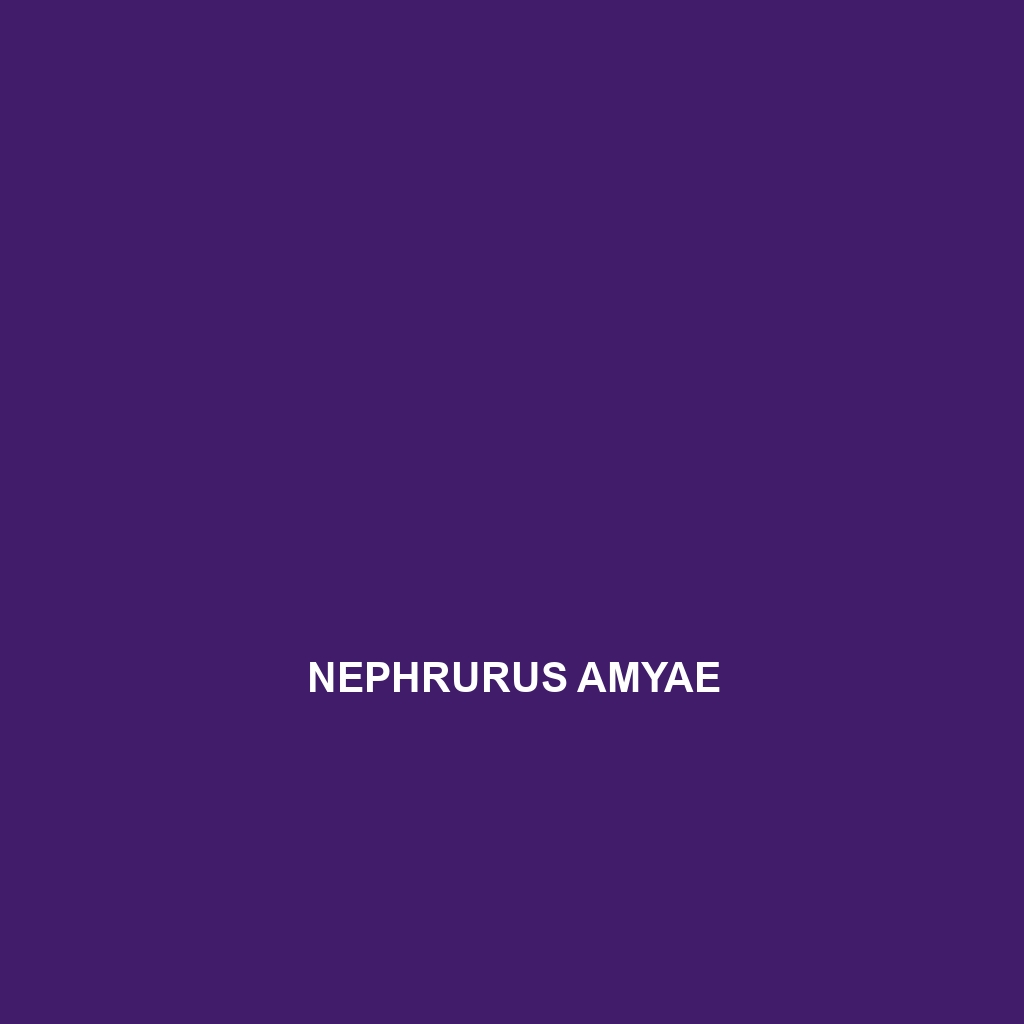Common Name
Nephrurus amyae
Scientific Name
Nephrurus amyae
Habitat
The Nephrurus amyae, commonly known as Amy’s knob-tail gecko, predominantly inhabits the arid regions and semi-desert areas in Australia, specifically in the southern and central territories. This unique lizard thrives in habitats characterized by sparse vegetation, sandy soils, and rocky outcrops. The climate where Nephrurus amyae is found is typically hot and dry, marked by low annual rainfall. The gecko utilizes its environment to its advantage, creating burrows in the sandy substrates which provide refuge from extreme temperatures. Such habitats are often surrounded by scrubby bushland and grasslands, illustrating the adaptability of this species to contrasting ecosystems.
Physical Characteristics
Nephrurus amyae exhibits distinctive physical traits that set it apart within its family. Typically, adult geckos range from 12 to 18 centimeters in length. Their robust, flattened bodies are covered with smooth, pebbly scales that aid in camouflage against the sandy terrain they frequent. The coloration of Nephrurus amyae varies from light fawn to reddish-brown with darker markings, enabling them to blend into their environment seamlessly. A key characteristic is their truncated tail, which resembles a knob; this unique adaptation serves as a fat storage reserve and possibly deters predators when they drop their tail. Its large, bulging eyes provide excellent night vision, signifying its nocturnal lifestyle.
Behavior
Nephrurus amyae is primarily nocturnal, spending the daylight hours tucked away in burrows or crevices to avoid the harsh midday sun. As night falls, these geckos emerge to hunt and explore their territory. They exhibit solitary behavior, except during mating seasons. Mating rituals involve elaborate displays of courtship in which males will engage in head bobbing and body movements to attract females. Their social interactions are limited, and they utilize scent marking to establish territory. Additionally, Nephrurus amyae demonstrates a flight response when threatened, relying on their speed and ability to blend into their surroundings to evade predators.
Diet
The diet of Nephrurus amyae primarily consists of insects and other small invertebrates, categorizing them as insectivores. Their feeding patterns are opportunistic, and they actively hunt at night, feeding on a wide variety of insects such as crickets, beetles, and moths. This gecko possesses a specialized feeding apparatus in its mouth, allowing it to consume prey whole. Occasionally, they may also consume the larvae of ants or termites. This diet is crucial not only for their survival but also plays a significant role in controlling insect populations within their habitats.
Reproduction
The breeding season for Nephrurus amyae occurs during the warmer months, typically from late spring to early summer. Females usually lay two eggs per clutch, which they deposit in sandy substrates or hidden areas within their territory. The incubation period for the eggs ranges from eight to twelve weeks, depending on environmental conditions such as temperature. After hatching, the young geckos emerge fully formed and capable of independent survival. Parental care in Nephrurus amyae is absent, with juveniles left to fend for themselves immediately after hatching, an adaptation that aligns with their solitary lifestyle.
Conservation Status
As of now, Nephrurus amyae is classified as ‘Least Concern’ according to the International Union for Conservation of Nature (IUCN). While this species faces threats from habitat destruction and climate change, its wide distribution across suitable habitats has afforded it some security. Conservation efforts include habitat protection and monitoring population dynamics to ensure stable populations for the future. Nonetheless, continued vigilance is necessary as environmental changes and human activities can pose serious threats to this and other reptile species.
Interesting Facts
Nephrurus amyae has some fascinating features that make it exceptional among reptiles. Notably, this gecko has the ability to fit itself into small crevices, a behavior that helps it evade predators and conserve moisture. Additionally, these lizards have the capacity to drop their tails as a defense mechanism, which can distract predators, allowing the gecko to escape. Its unique habit of burying itself in sand or soil also aids in maintaining hydration and temperature control, further enhancing its survival in arid environments.
Role in Ecosystem
The ecological role of Nephrurus amyae is significant; as insectivores, they help regulate insect populations within their ecosystems, contributing to the overall health of their habitat. Their presence also indicates a balanced ecosystem, as they serve as prey for larger predators such as snakes and birds of prey. By participating in the food web, Nephrurus amyae plays a vital role in maintaining ecological dynamics, showcasing the importance of each species in sustaining biodiversity.
This HTML-formatted description provides an SEO-optimized overview of the species, ensuring that it embodies both detailed information and the proper structure to attract interested readers.
